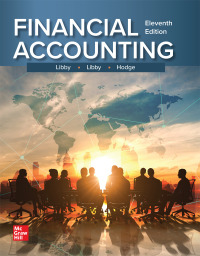Rucksack Incorporated is a small manufacturing company that makes model trains to sell to toy stores. It
Question:
Rucksack Incorporated is a small manufacturing company that makes model trains to sell to toy stores. It has a small service department that repairs customers’ trains for a fee. The company has been in business for five years. At the end of the company’s prior fiscal year ending on December 31, the accounting records reflected total assets of $500,000 (cash, $120,000; equipment, $70,000; buildings, $310,000), total liabilities of $200,000 (all long-term notes payable), and total stockholders’ equity of $300,000 (common stock with a par value of $1.00 per share, $20,000; additional paid-in capital, $200,000; retained earnings, $80,000). During the current year, the following summarized events occurred:
a. Borrowed $11,000 cash from the bank and signed a 10-year note.
b. Purchased model train molding equipment for $30,000, paying $3,000 in cash and signing a note due in six months for the balance.
c. Issued an additional 10,000 shares of common stock for $20,000 cash.
d. Purchased a delivery truck (equipment) for $10,000; paid $5,000 cash and signed a short-term note payable for the remainder.
e. Lent $2,000 cash to the company president, Kal Russeck, who signed a note with terms showing the principal plus interest due in six months.
f. Purchased $85,000 in long-term investments.
g. A stockholder sold $5,000 of his common stock in Russeck Incorporated to his neighbor.
Required:
1. Was Russeck Incorporated organized as a sole proprietorship, a partnership, or a corporation? Explain the basis for your answer.
2. During the current year, the records of the company were inadequate. You were asked to prepare the summary of transactions shown above. To develop a quick assessment of their economic effects on Russeck Incorporated, you have decided to complete the tabulation that follows and to use plus (+) for increases and minus (−) for decreases for each account. The first transaction is used as an example.

3. Did you include event (g) in the tabulation? Why?
4. Based on beginning balances plus the completed tabulation, provide the following amounts (show computations):
a. Total assets at the end of the year.
b. Total liabilities at the end of the year.
c. Total stockholders’ equity at the end of the year.
d. Cash balance at the end of the year.
e. Total current assets at the end of the year.
5. Compute the current ratio for the current year. Round your answer to two decimal places. What does this suggest about the company?
Step by Step Answer:

Financial Accounting
ISBN: 9781264229734
11th Edition
Authors: Robert Libby, Patricia Libby, Frank Hodge





